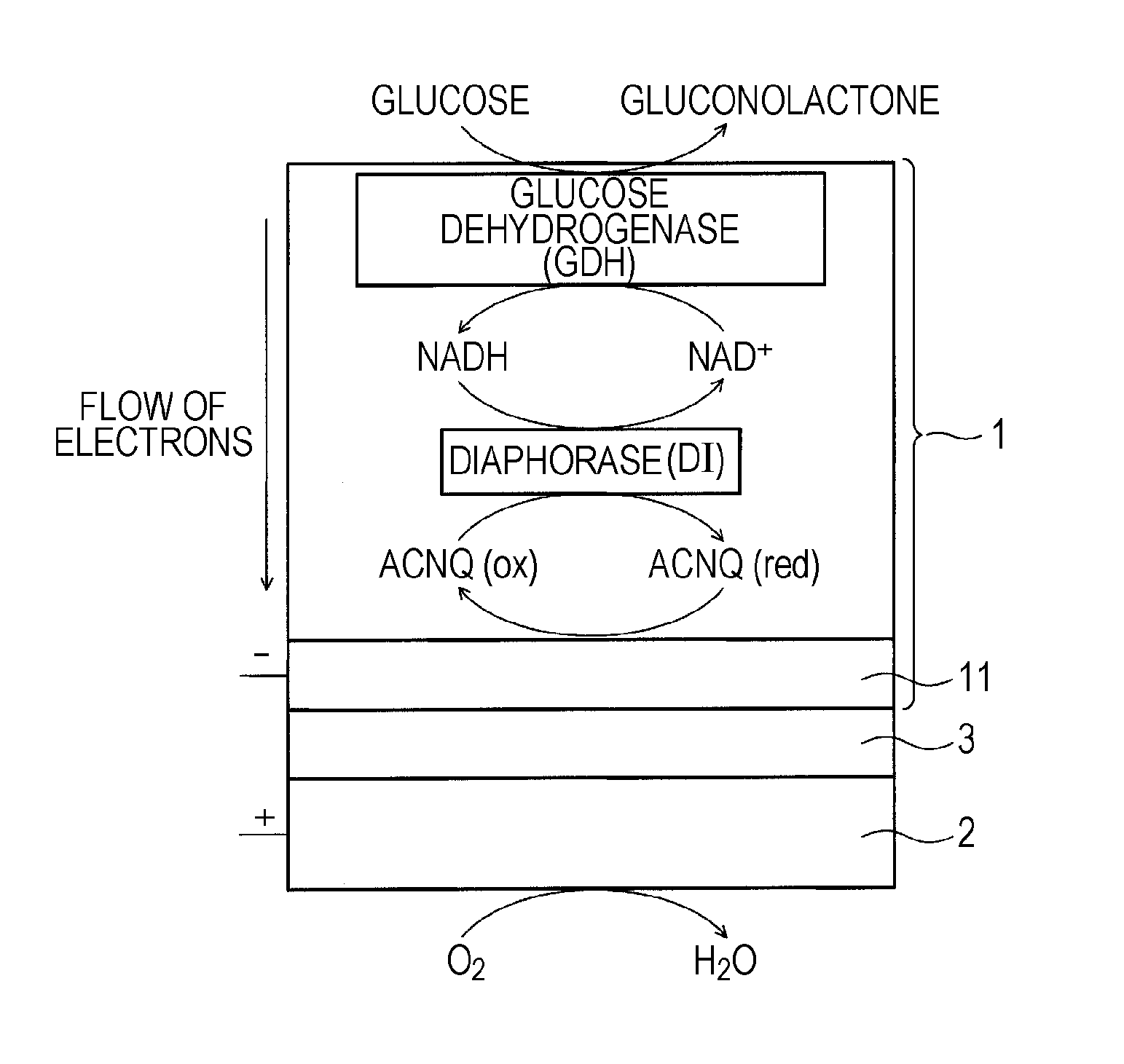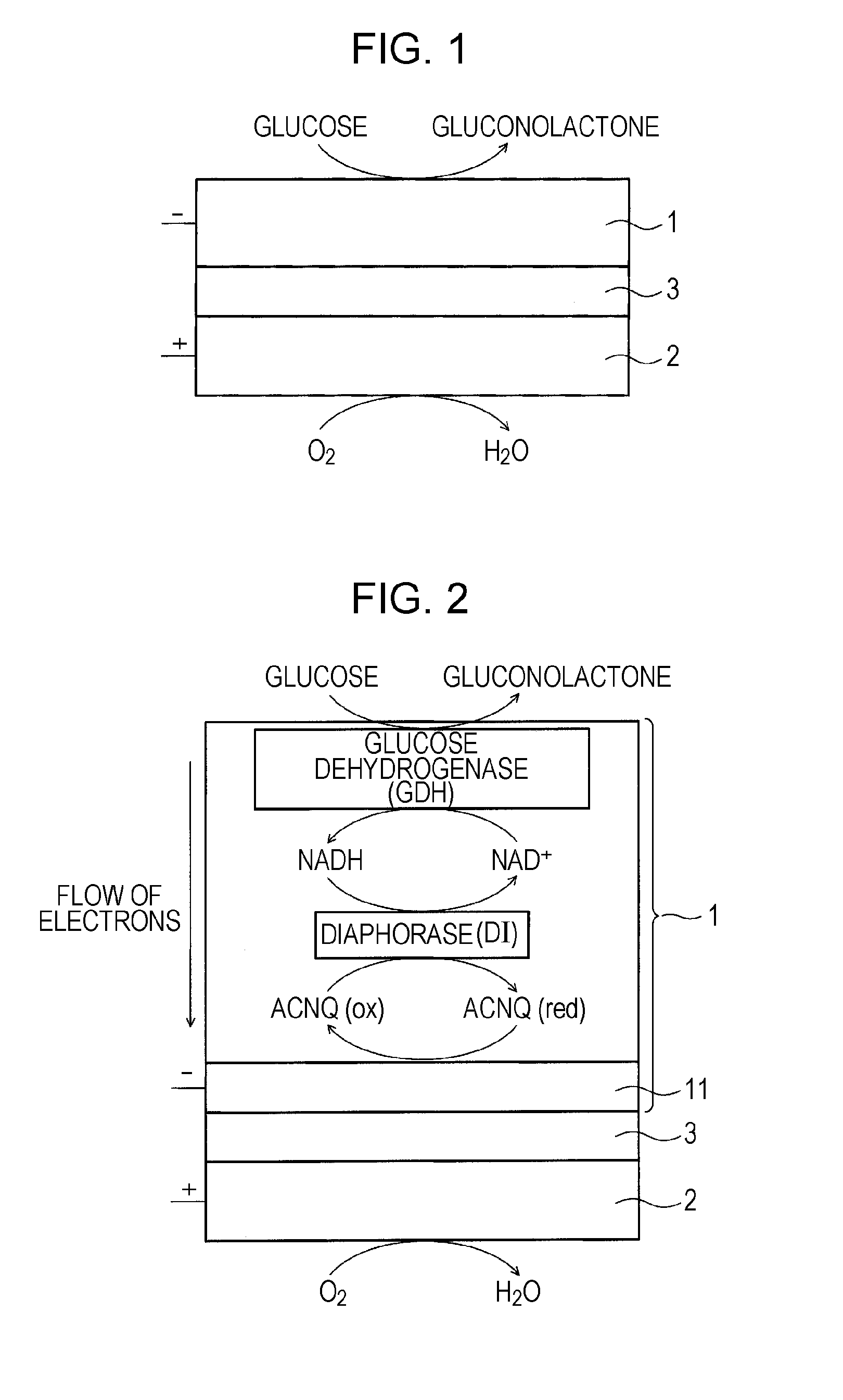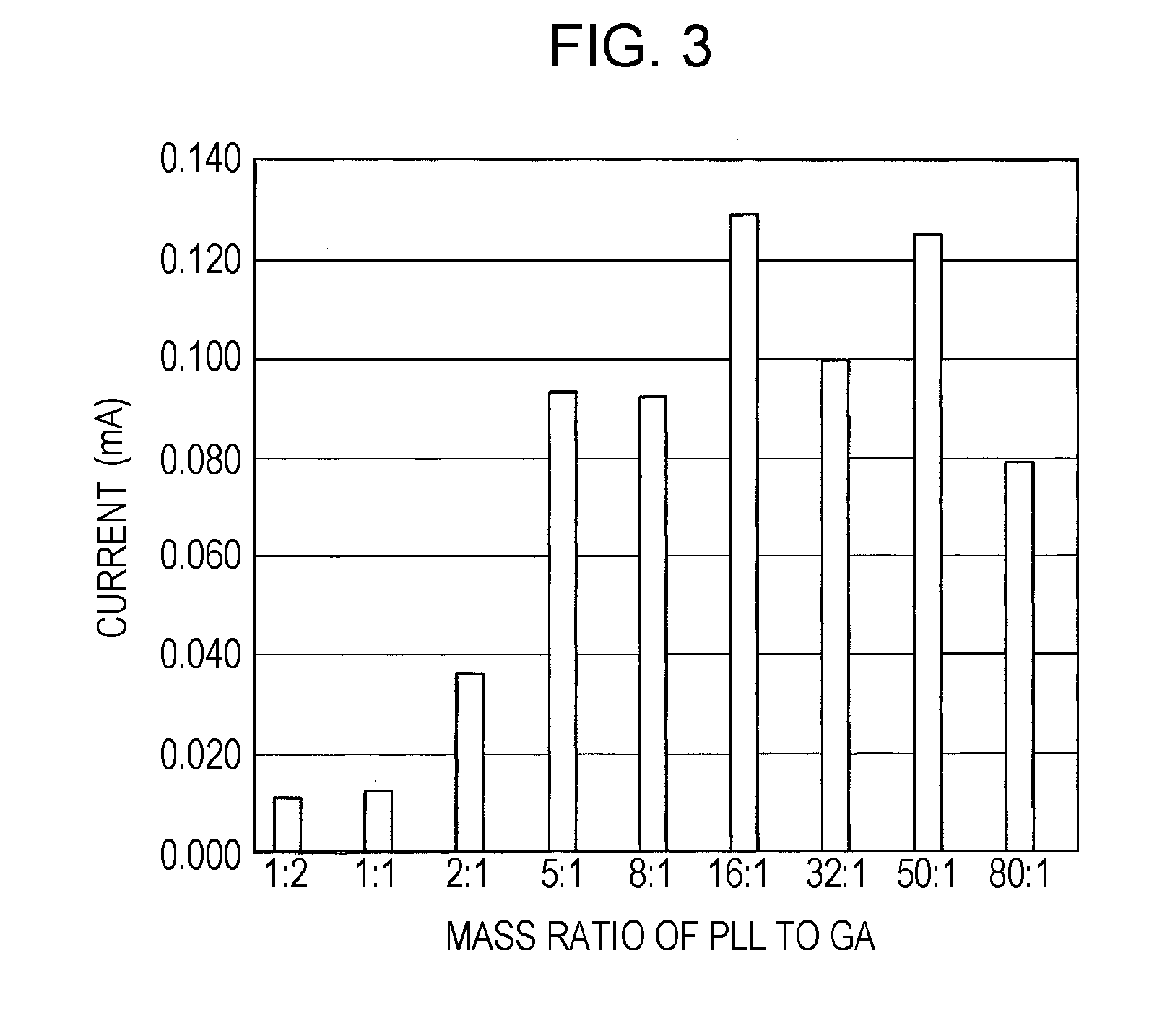Fuel cell and method for manufacturing the same, enzyme-immobilized electrode and method for manufacturing the same, and electronic apparatus
a technology of enzyme-immobilized electrodes and fuel cells, which is applied in the manufacture of final products, cell components, electrochemical generators, etc., can solve the problems of fuel cells that need to be heated to high temperature, require catalysts composed of expensive noble metals, and consume limited resources, so as to achieve high performance, improve maintenance ratio, and current density
- Summary
- Abstract
- Description
- Claims
- Application Information
AI Technical Summary
Benefits of technology
Problems solved by technology
Method used
Image
Examples
third embodiment (
3. Third embodiment (biofuel cell and method for manufacturing the same)
fourth embodiment (
4. Fourth embodiment (biofuel cell)
1. First Embodiment
[0162]FIG. 1 schematically shows a biofuel cell according to a first embodiment of the present invention. In the biofuel cell, glucose is used as a fuel. FIG. 2 schematically shows a detailed structure of the anode of the biofuel cell, an example of a group of enzymes immobilized on the anode, and an electron transfer reaction performed by the group of enzymes.
[0163]As shown in FIG. 1, the biofuel cell has a structure in which an anode 1 and a cathode 2 face each other with an electrolyte layer 3 therebetween, the electrolyte layer 3 having no electron conductivity and conducting only protons. At the anode 1, glucose supplied as a fuel is decomposed by an enzyme to extract electrons and also generate protons (H+). At the cathode 2, water is generated using protons transported from the anode 1 through the electrolyte layer 3, electrons transferred from the anode 1 through an external circuit, and oxygen in the air or...
PUM
 Login to View More
Login to View More Abstract
Description
Claims
Application Information
 Login to View More
Login to View More - R&D
- Intellectual Property
- Life Sciences
- Materials
- Tech Scout
- Unparalleled Data Quality
- Higher Quality Content
- 60% Fewer Hallucinations
Browse by: Latest US Patents, China's latest patents, Technical Efficacy Thesaurus, Application Domain, Technology Topic, Popular Technical Reports.
© 2025 PatSnap. All rights reserved.Legal|Privacy policy|Modern Slavery Act Transparency Statement|Sitemap|About US| Contact US: help@patsnap.com



